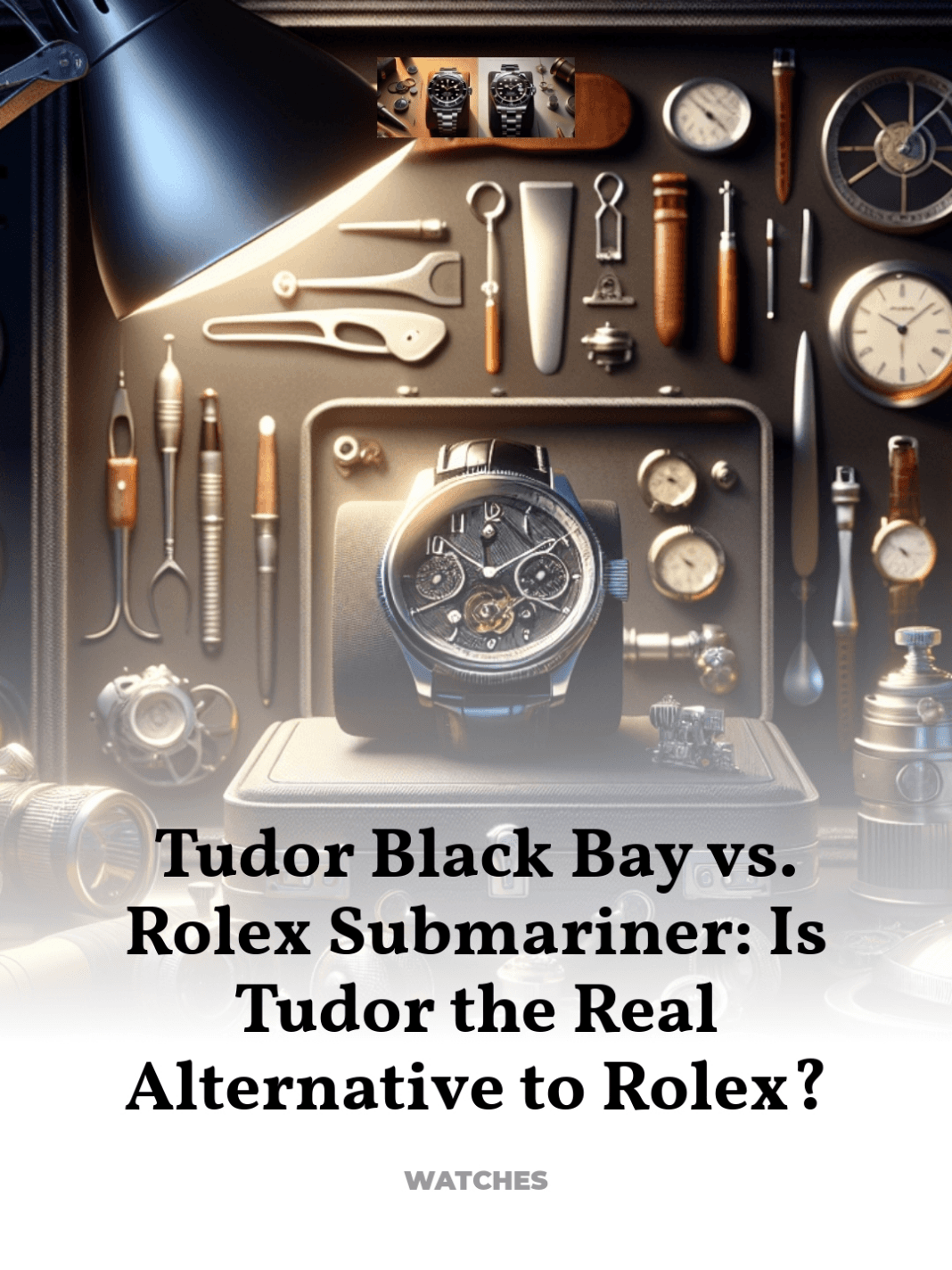A side-by-side comparison of two of the most desirable dive watches
The world of luxury dive watches is a testament to craftsmanship, precision, and durability, epitomized by two iconic models: the Tudor Black Bay and the Rolex Submariner.
- Introduction to Tudor Black Bay and Rolex Submariner
- Design and Aesthetics: A Comparative Analysis
- Performance and Technical Features
- Heritage and Cultural Impact
- Market Position and Consumer Perception
- Is Tudor a Viable Alternative to Rolex?
Introduction to Tudor Black Bay and Rolex Submariner
The Tudor Black Bay and Rolex Submariner stand as pillars in the dive watch category, each with a unique story and an impressive lineage. The Rolex Submariner, introduced in 1953, revolutionized dive watches with its unparalleled functionality and style. Tudor, a subsidiary of Rolex founded in 1926, launched the Black Bay line in 2012, which quickly became known for its exceptional quality and affordability.
Design and Aesthetics: A Comparative Analysis
Both the Tudor Black Bay and the Rolex Submariner share a lineage that influences their design, yet each follows its path in aesthetic appeal.
- Case and Dial: The Rolex Submariner features a 41mm diameter case made from Oystersteel, known for its durability and corrosion resistance, while the Tudor Black Bay comes in a slightly larger 41mm case but uses stainless steel. The Submariner’s dial is quintessentially minimalist with its clean, functional layout. In contrast, the Black Bay’s dial includes vintage-inspired elements like the snowflake hands, a nod to Tudor’s 1970s models.
- Bezel: Both models feature a unidirectional rotatable bezel, crucial for tracking diving time. The Submariner’s bezel is crafted from Cerachrom, Rolex’s proprietary ceramic material, known for its scratch resistance and color durability. The Black Bay’s bezel, while also robust, uses anodized aluminum, which does not offer the same level of scratch resistance but maintains a classic look.
- Bracelet: The Submariner is equipped with Rolex’s Oyster bracelet with the Glidelock extension system for fine adjustments. Tudor’s approach with the Black Bay includes a riveted bracelet that enhances the vintage aesthetic, alongside offering a fabric strap option, reflecting its versatile and user-friendly design ethos.
Performance and Technical Features
The technical capabilities of a dive watch are paramount; both Tudor and Rolex excel in this area with features tailored to professional and amateur divers alike.
- Movement: Rolex Submariner houses the Calibre 3235, a self-winding mechanical movement developed and manufactured by Rolex, featuring a 70-hour power reserve. Tudor Black Bay models are equipped with the MT5602, also a self-winding mechanical movement, but with a slightly lower power reserve of 70 hours. Both movements are COSC-certified, ensuring high precision.
- Water Resistance: The Submariner’s water resistance reaches up to 300 meters, suitable for deep-sea diving. The Black Bay is also capable, with a water resistance of 200 meters, more than adequate for most recreational diving activities.
- Durability: Rolex’s use of Oystersteel and Cerachrom gives the Submariner an edge in terms of durability. Tudor’s use of traditional materials like stainless steel and aluminum does not detract from its robustness but positions it as a more accessible, everyday alternative.
Heritage and Cultural Impact
The cultural footprint of both Tudor and Rolex is significant, with each brand boasting a rich heritage and an influential presence in the luxury watch industry.
- Rolex’s Legacy: As a pioneer in the industry, Rolex has been associated with a number of historical milestones, including the deepest dive recorded by the Trieste bathyscaphe in 1960. The Submariner itself has become a symbol of prestige and high achievement.
- Tudor’s Resurgence: Tudor has successfully carved out a niche by leveraging its historical ties with Rolex and its own unique contributions to watchmaking, such as the introduction of affordable yet high-quality models that appeal to a broader audience.
Market Position and Consumer Perception
While Rolex continues to maintain its status as a luxury icon, Tudor has been gaining ground by offering a compelling combination of quality, history, and affordability.
- Brand Prestige: Rolex is often perceived as the ultimate status symbol in watches, reflecting success and personal achievement. Tudor, while respected, is sometimes viewed as the ‘younger sibling’ but is increasingly appreciated for its independent innovations and value proposition.
- Price Point: The Submariner commands a higher price, consistent with Rolex’s positioning in the luxury market. Tudor’s Black Bay, on the other hand, is priced more accessibly, making it an attractive option for emerging collectors and those seeking high-quality without the Rolex price tag.
Is Tudor a Viable Alternative to Rolex?
In conclusion, while the Rolex Submariner remains a paragon of luxury dive watches, the Tudor Black Bay presents itself as a formidable alternative, offering robust performance, a rich heritage, and a more accessible price point. For enthusiasts and collectors, choosing between the two may come down to personal preference in style, brand perception, and budget.
For further exploration of these iconic timepieces, visit authoritative sources such as Hodinkee’s Watch Reviews.



